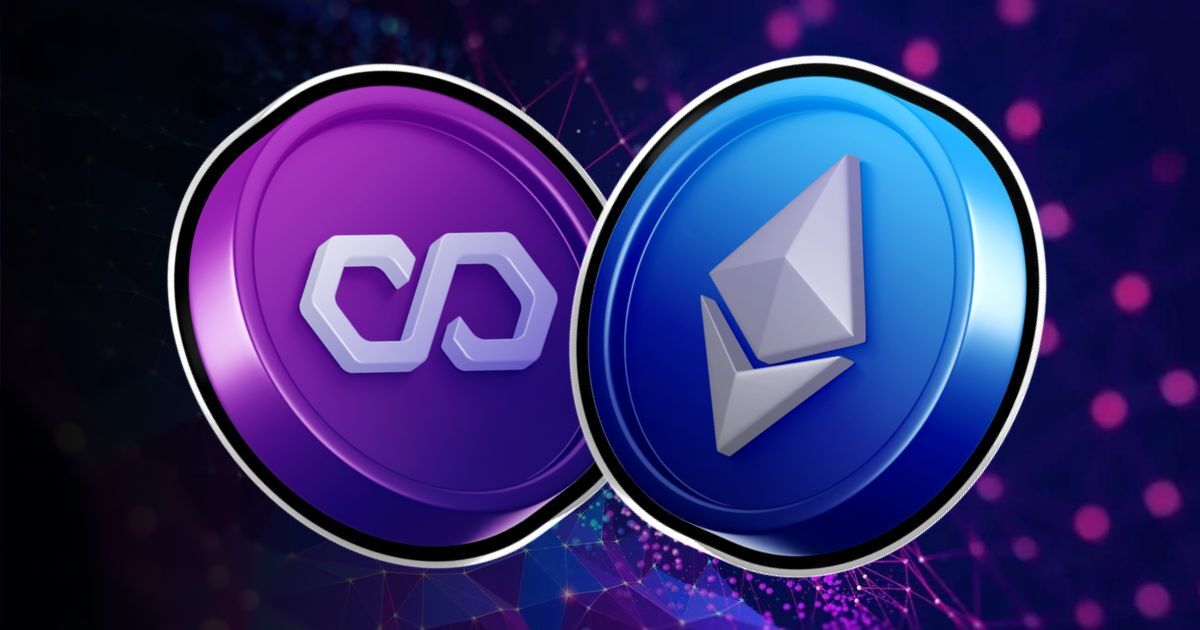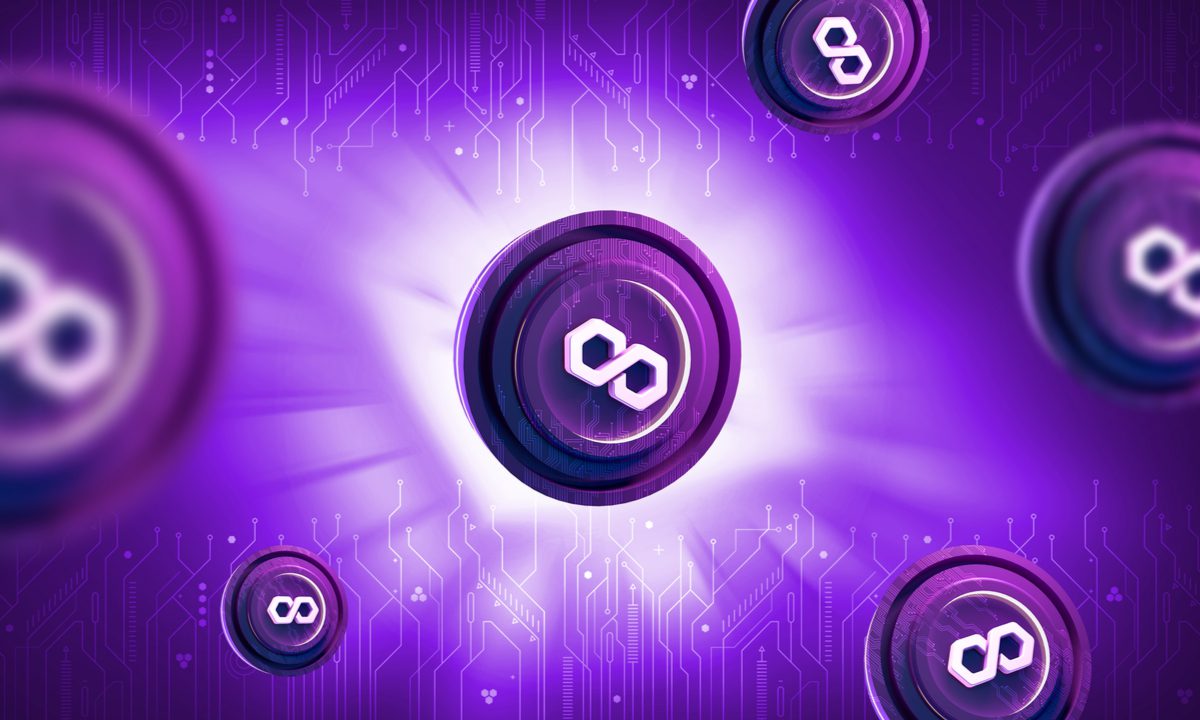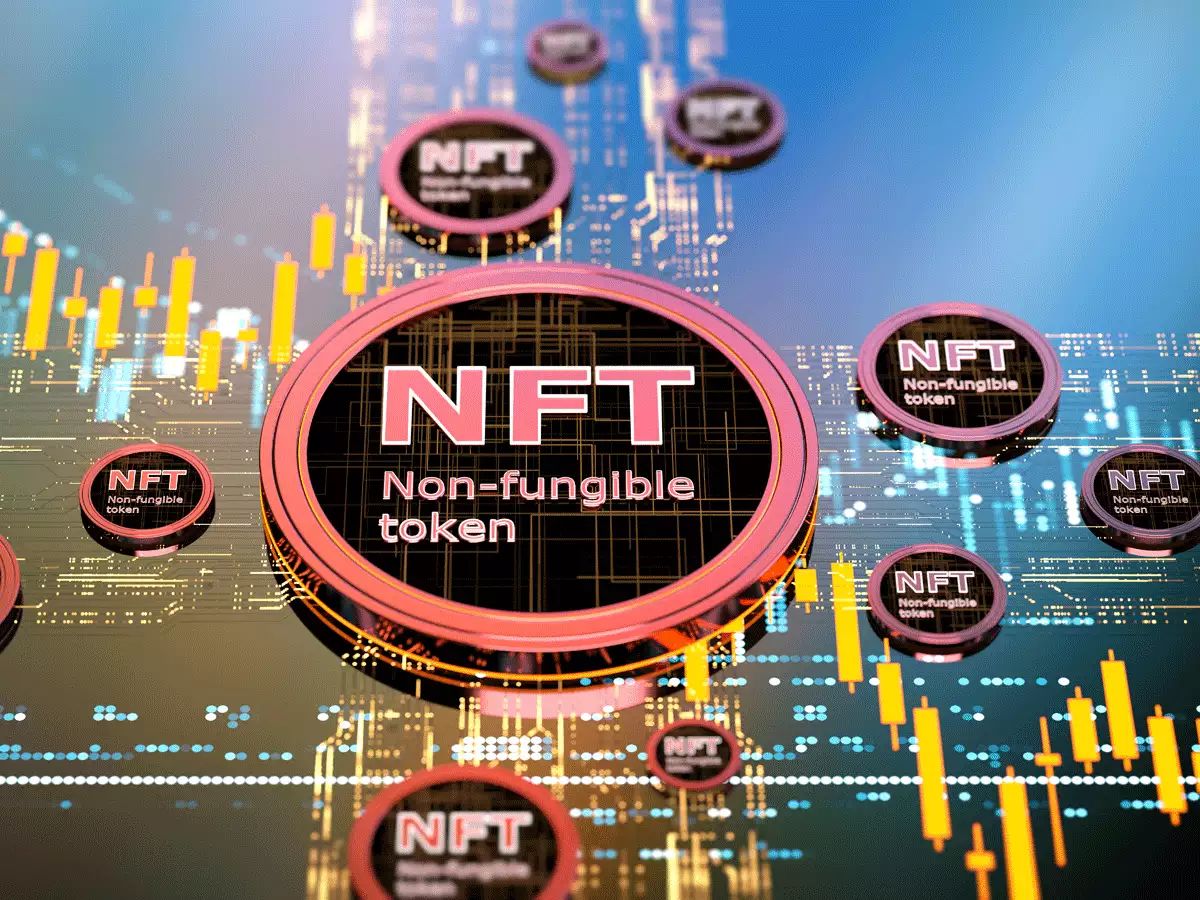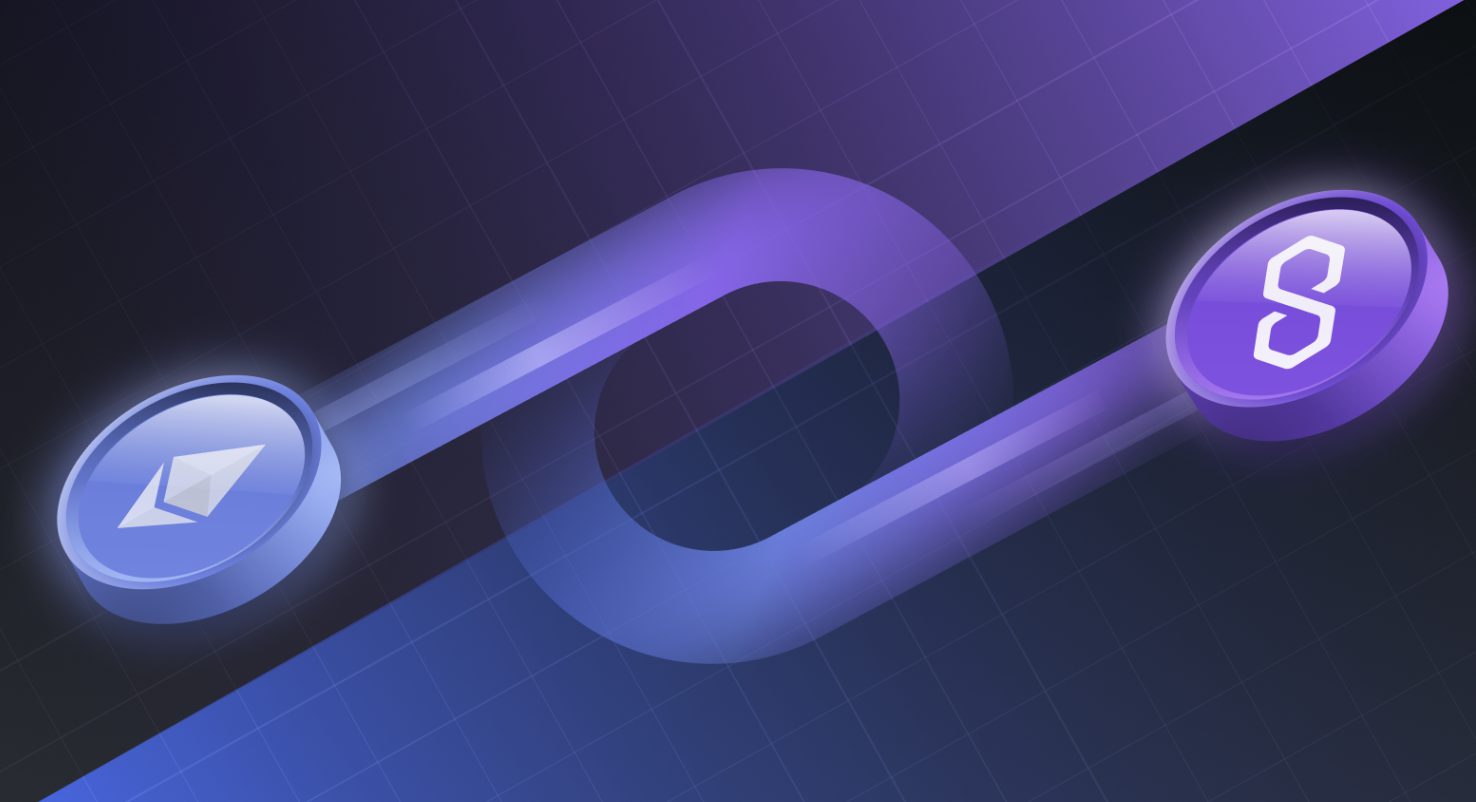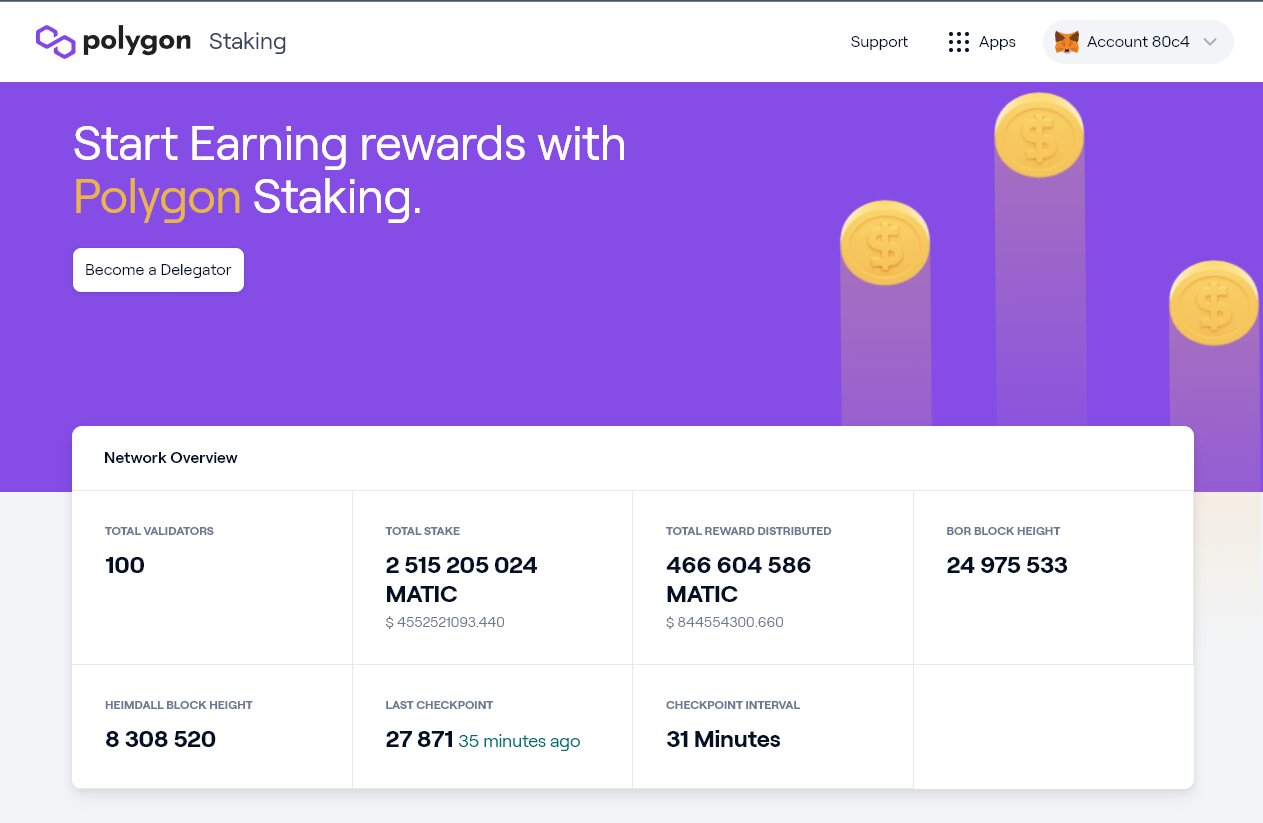Introduction
The world of blockchain technology has been rapidly evolving, and Ethereum has long been at the forefront of this digital revolution. Created by Vitalik Buterin in 2013, Ethereum has become the most widely used blockchain platform, enabling the development of decentralized applications (dApps) and the execution of smart contracts. While Ethereum has been instrumental in driving innovation and facilitating the growth of the blockchain ecosystem, it does face certain limitations, particularly in terms of scalability and transaction fees.
To overcome these challenges, a solution called Polygon has emerged as an increasingly popular alternative to Ethereum. Formerly known as Matic Network, Polygon is a layer 2 scaling solution that aims to enhance the functionality and performance of Ethereum, while maintaining compatibility with its existing infrastructure.
Polygon offers a wide range of features and benefits that address the drawbacks of Ethereum, making it an attractive choice for developers, businesses, and users alike. In this article, we will explore the key differences between Ethereum and Polygon, and delve into the advantages that Polygon brings to the table.
The goal of this article is to provide a comprehensive understanding of what Polygon is, how it works, and why it has gained significant traction within the blockchain community. By the end of this article, you will have a solid grasp of the potential of Polygon and how it can shape the future of blockchain technology.
What is Ethereum?
Ethereum is a decentralized blockchain platform that enables the creation and execution of smart contracts. It was developed by a team led by Vitalik Buterin, who recognized the limitations of Bitcoin and sought to build a more versatile and programmable blockchain solution.
One of the key innovations of Ethereum is its ability to support the creation of smart contracts. Smart contracts are self-executing agreements that automatically execute predefined actions when certain conditions are met. These contracts are stored on the Ethereum blockchain, making them immutable and resistant to censorship.
Ethereum operates using its native cryptocurrency called Ether (ETH), which is used to power the network and incentivize participants. Ether can be used for various purposes, including paying for transaction fees, participating in initial coin offerings (ICOs), and as a store of value.
Unlike Bitcoin, which primarily focuses on peer-to-peer transactions and store of value, Ethereum aims to be a decentralized platform for building and running decentralized applications (dApps). This versatility has led to a significant increase in dApp development and usage within the Ethereum ecosystem.
Another important aspect of Ethereum is its consensus mechanism. Ethereum initially used the proof-of-work (PoW) consensus algorithm, which required miners to solve complex mathematical problems to validate transactions and secure the network. However, Ethereum is currently in the process of transitioning to a proof-of-stake (PoS) consensus algorithm, known as Ethereum 2.0, which will reduce energy consumption and improve scalability.
Ethereum has gained widespread adoption and has become the foundation for many blockchain projects and initiatives. Its open-source nature and extensive developer community have contributed to its success, driving innovation and pushing the boundaries of what’s possible in the blockchain space.
What is Polygon?
Polygon, formerly known as Matic Network, is a layer 2 scaling solution for the Ethereum blockchain. It aims to address the scalability and usability issues faced by Ethereum, allowing for faster and more cost-efficient transactions.
Polygon acts as a framework for building and connecting multiple scaling solutions on top of Ethereum. It provides developers with the tools and infrastructure necessary to create and deploy scalable dApps. By leveraging layer 2 technology, Polygon is able to process a large number of transactions off-chain and subsequently settle them on the Ethereum mainnet, reducing congestion and lowering transaction fees.
One of the key features of Polygon is its compatibility with Ethereum. It seamlessly integrates with the Ethereum network, allowing dApps and smart contracts to run on the Polygon sidechain while remaining connected to the Ethereum mainnet. This interoperability enables developers to leverage the existing Ethereum ecosystem and tap into its wide user base.
Polygon solves the problem of scalability by utilizing a unique architecture called Plasma. Plasma is a set of smart contracts that run on the Ethereum network and act as a bridge between the Polygon sidechain and the Ethereum mainnet. This structure allows for secure and instant transfers of assets between the two chains.
Furthermore, Polygon supports multiple layer 2 solutions, including Plasma, Optimistic Rollups, and ZK Rollups. These solutions provide different trade-offs in terms of scalability, security, and decentralization, giving developers the flexibility to choose the most suitable scaling solution for their specific use case.
In addition to scalability, Polygon also aims to improve the user experience of decentralized applications. It provides fast and seamless transactions, making interactions with dApps feel more like traditional web applications. Moreover, Polygon offers low transaction fees, making it cost-effective for users to engage with dApps and perform transactions without worrying about high gas costs.
With its innovative approach to scaling and commitment to interoperability, Polygon has gained significant attention and adoption within the blockchain community. It has attracted various projects, protocols, and users to build and deploy their applications on its secure and scalable infrastructure.
Advantages of Polygon over Ethereum
Polygon offers several advantages over Ethereum, addressing its limitations and providing a more efficient and user-friendly experience for developers and users. Here are some key advantages of Polygon:
- Scalability: One of the primary advantages of Polygon is its ability to significantly improve scalability compared to Ethereum. By utilizing layer 2 scaling solutions such as Plasma, Optimistic Rollups, and ZK Rollups, Polygon can process a large number of transactions off-chain and settle them on the Ethereum mainnet. This enables faster and more efficient transactions, alleviating the congestion and high fees associated with Ethereum during periods of high demand.
- Improved User Experience: Polygon aims to enhance the user experience of decentralized applications. With fast transaction processing and low fees, users can interact with dApps seamlessly and cost-effectively. This improved user experience makes decentralized applications more accessible to a wider audience, driving adoption and usage.
- Low Transaction Fees: Ethereum has struggled with high transaction fees during times of network congestion. Polygon’s layer 2 solutions enable significantly lower transaction fees, making it more cost-effective for users to interact with dApps and perform transactions. This reduction in fees allows for a wider range of use cases and encourages more frequent and meaningful engagement with decentralized applications.
- Compatibility with Ethereum: Polygon is fully compatible with the Ethereum network, allowing for seamless integration with existing Ethereum infrastructure and tools. This compatibility enables developers to easily port their dApps and smart contracts to Polygon, leveraging the benefits of layer 2 scaling without sacrificing the advantages of the Ethereum ecosystem.
- Security: By integrating with the Ethereum mainnet, Polygon inherits the security and resilience of the Ethereum network. The Plasma framework, utilized by Polygon, ensures the safety and integrity of transactions by relying on the underlying Ethereum blockchain for final settlement. This ensures that assets transferred and stored on the Polygon sidechain are secure and resistant to censorship.
The advantages offered by Polygon position it as a compelling solution for developers and users seeking scalability, cost-efficiency, and an improved user experience in the Ethereum ecosystem. As the demand for decentralized applications continues to grow, Polygon has emerged as a promising choice for building and deploying high-performing and user-friendly applications.
How does Polygon work?
Polygon operates as a layer 2 scaling solution for the Ethereum blockchain, leveraging various techniques and technologies to enhance scalability and usability. At its core, Polygon utilizes a framework called Plasma to create a scalable sidechain that is connected to the Ethereum mainnet.
The architecture of Polygon consists of four key components:
- Polygon PoS Chain: The Polygon PoS (Proof of Stake) chain serves as the layer 1 security provider for the Polygon network. It is a secure and decentralized chain that relies on a network of validators to validate transactions and secure the network.
- Polygon Sidechains: Polygon supports multiple sidechains, also referred to as “commit chains,” which are connected to the Polygon PoS chain. These sidechains handle the bulk of the transaction processing and computation, allowing for faster and more scalable transactions. Each sidechain on Polygon is compatible with the Ethereum Virtual Machine (EVM), enabling seamless deployment and execution of smart contracts.
- Polygon Bridge: The Polygon Bridge serves as a bi-directional bridge between the Ethereum mainnet and the Polygon sidechains. It allows for the transfer of assets between the two chains, ensuring that assets can be moved back and forth securely and efficiently. The bridge also enables interoperability, allowing dApps and contracts on the Ethereum mainnet to interact with those deployed on the Polygon sidechains.
- Polygon SDK and APIs: Polygon provides an easy-to-use Software Development Kit (SDK) and a set of APIs that simplify the development and deployment of dApps and smart contracts. The SDK offers tools, libraries, and documentation that allow developers to seamlessly integrate with the Polygon network and leverage its scaling capabilities.
When a transaction is initiated on the Polygon network, it is processed and confirmed on the respective Polygon sidechain, ensuring fast and low-cost transactions. Once confirmed, the transaction’s final state is anchored to the Ethereum mainnet via the Polygon Bridge. This anchoring process ensures the security and immutability of the transaction by leveraging the Ethereum mainnet as the ultimate settlement layer.
By using the Polygon network, developers can harness the scalability and low fees offered by layer 2 solutions while maintaining compatibility with the Ethereum ecosystem. This opens up new possibilities for building high-performance and cost-efficient decentralized applications that can cater to a broader user base.
The combination of Plasma, sidechains, the bridge, and developer-friendly tools makes Polygon a powerful and flexible scaling solution that addresses the limitations of Ethereum, enabling a more scalable, efficient, and user-friendly blockchain experience.
Key Features of Polygon
Polygon offers a range of features that make it a versatile and attractive solution for developers and users in the blockchain space. These features contribute to its scalability, usability, and compatibility with the Ethereum ecosystem. Here are the key features of Polygon:
- Scalability: Polygon addresses the scalability challenges faced by Ethereum by utilizing layer 2 scaling solutions such as Plasma, Optimistic Rollups, and ZK Rollups. This allows for faster and more efficient transaction processing, resulting in a high throughput and improved scalability compared to the Ethereum mainnet.
- Low Transaction Fees: Polygon significantly reduces transaction fees compared to Ethereum during times of high network congestion. By processing transactions on the Polygon sidechain and settling them on the Ethereum mainnet, users can enjoy cost-effective transactions, making it feasible to use decentralized applications and transact with smaller amounts without being hindered by high gas fees.
- Ethereum Compatibility: Polygon seamlessly integrates with the Ethereum network, making it compatible with existing Ethereum tools, wallets, and infrastructure. Smart contracts and dApps built for Ethereum can easily be ported to Polygon, allowing developers to leverage the benefits of layer 2 scaling without the need for substantial modifications to their existing codebase.
- Security: Polygon inherits the security of the Ethereum network through its integration with the Ethereum mainnet. By utilizing Plasma, the Polygon sidechain ensures the safety and integrity of assets transferred and stored on the Polygon network. The final settlement of transactions on Ethereum offers an additional layer of security, making Polygon a robust and secure solution for decentralized applications.
- Developer-Friendly Tools: Polygon provides a Software Development Kit (SDK) and a comprehensive set of APIs that simplify the development process for building on the Polygon network. The SDK offers tools, libraries, and documentation to assist developers in seamlessly integrating their applications with Polygon, while the APIs enable easy access to the functionality and features provided by Polygon’s infrastructure.
- Interoperability: Polygon allows for interoperability between the Ethereum mainnet and the Polygon sidechains. This enables users to transfer assets between the two chains and allows dApps deployed on the Ethereum mainnet to interact with those deployed on the Polygon network. The ability to seamlessly move assets and data across chains enhances the functionality and user experience of decentralized applications.
The combination of these key features positions Polygon as a powerful scaling solution for Ethereum, providing developers and users with increased scalability, lower fees, compatibility with existing Ethereum infrastructure, robust security, and seamless interoperability. As a result, Polygon has gained popularity and is seeing widespread adoption within the blockchain community.
Polygon Use Cases
Polygon’s scalability, compatibility with Ethereum, and low transaction fees make it suitable for a wide range of use cases within the blockchain industry. Here are some notable use cases for Polygon:
- Decentralized Finance (DeFi): DeFi has gained significant traction in recent years, and Polygon has emerged as a preferred choice for many DeFi applications. By leveraging Polygon’s scalability and low fees, DeFi projects can provide users with faster and cheaper transactions, facilitating seamless trading, lending, and yield farming.
- Gaming: Blockchain gaming has seen rapid growth, with the desire for true ownership of in-game assets and the ability to trade them. Polygon provides a scalable and cost-efficient infrastructure for gaming dApps, enabling developers to create immersive and interactive gaming experiences while ensuring the security and transparency of in-game assets.
- NFT Marketplaces: Non-Fungible Tokens (NFTs) have gained immense popularity for their ability to represent unique digital assets. With Polygon’s scalability and low fees, NFT marketplaces can accommodate high volumes of trades without burdening users with exorbitant transaction costs. This makes Polygon an attractive choice for artists, collectors, and creators looking to explore the world of NFTs.
- Enterprise Solutions: Polygon’s scalability and Ethereum compatibility make it a viable solution for enterprises seeking to adopt blockchain technology. It offers an efficient infrastructure for supply chain management, asset tracking, and secure data sharing, allowing businesses to leverage the benefits of blockchain without the scalability limitations associated with the Ethereum mainnet.
- Governance and Voting: Blockchain-based governance and voting systems can benefit from Polygon’s scalability and low transaction fees. By utilizing Polygon, decentralized governance platforms can provide a more inclusive and cost-effective way for participants to vote on proposals and actively participate in decision-making processes.
- Data Management: With its secure and scalable infrastructure, Polygon can be utilized for decentralized data management systems. Applications such as decentralized storage, data marketplaces, and identity management can leverage Polygon to ensure data integrity, security, and efficient processing.
These use cases highlight the versatility and potential of Polygon in various sectors of the blockchain industry. As more developers and projects explore the capabilities of Polygon, we can expect to see further innovation and adoption in these and many other areas.
How to Use Polygon
To start using Polygon, follow these steps:
- Choose a Wallet: Select a wallet that is compatible with Polygon. Popular options include MetaMask, Trust Wallet, and MyEtherWallet. Ensure that you have some Ethereum (ETH) in your wallet to cover transaction fees.
- Connect to the Polygon Network: Open your selected wallet and connect it to the Polygon network. In MetaMask, click on the network dropdown and select “Custom RPC”. Enter the relevant details for the Polygon network, including the Network Name, RPC URL, and Chain ID. Save the settings and switch to the Polygon network.
- Transfer Assets to Polygon: If you have assets on the Ethereum mainnet, you can transfer them to the Polygon network. Use the Polygon Bridge or other supported tools to move your assets from Ethereum to Polygon. This will allow you to interact with dApps and services on the Polygon network.
- Access Polygon dApps: Browse decentralized applications (dApps) that are built on the Polygon network. These can include DeFi platforms, gaming applications, NFT marketplaces, and more. Visit the dApp website or platform, connect your wallet to the dApp, and you are ready to start using it.
- Perform Transactions: Within the dApp, you can perform transactions such as trading tokens, lending and borrowing, participating in token sales, or engaging in gaming activities. Transactions on Polygon are faster and generally have lower fees compared to the Ethereum mainnet.
- Monitor and Manage Your Assets: Use your wallet to monitor and manage your assets on the Polygon network. You can view your token balances, track transactions, and interact with other Polygon-compatible services.
- Exit to Ethereum: If you wish to move your assets back to the Ethereum mainnet, you can use the Polygon Bridge or other supported tools to transfer them. This is useful if you want to access services or applications on the Ethereum network or if you prefer to store your assets on the Ethereum mainnet.
It is important to note that while Polygon offers an enhanced user experience and lower transaction fees, it is still crucial to exercise caution and do your own research when using decentralized applications and interacting with smart contracts. Ensure that you are using trusted dApps and that you understand the risks associated with each application or service.
By following these steps, you can easily get started with using Polygon and explore the various decentralized applications and services built on its scalable and user-friendly infrastructure.
Conclusion
Polygon has emerged as a game-changer in the blockchain industry, offering a layer 2 scaling solution that addresses the scalability and usability challenges faced by Ethereum. By leveraging layer 2 technologies such as Plasma, Optimistic Rollups, and ZK Rollups, Polygon provides a scalable infrastructure that enables faster, more cost-efficient, and user-friendly transactions.
With its compatibility with Ethereum and the ability to seamlessly integrate with existing Ethereum infrastructure, Polygon has garnered significant attention and adoption within the blockchain community. Developers can easily port their dApps and smart contracts to Polygon, while users can enjoy low transaction fees and improved user experiences when interacting with decentralized applications.
By offering scalability, low transaction fees, Ethereum compatibility, security, developer-friendly tools, and interoperability, Polygon has positioned itself as a versatile and attractive solution for a wide range of use cases. Various sectors, including DeFi, gaming, NFT marketplaces, enterprise solutions, and more, can benefit from Polygon’s capabilities and advantages.
As the blockchain industry continues to evolve, Polygon’s innovative approach and commitment to enhancing the Ethereum ecosystem make it a key player in driving the next wave of blockchain adoption. By providing a scalable and user-friendly infrastructure, Polygon paves the way for the development of decentralized applications that can revolutionize industries and deliver enhanced experiences for users worldwide.
Whether you are a developer looking for a scalable platform to build your dApps or a user seeking more accessible and cost-effective blockchain experiences, Polygon offers a compelling solution. With its wide range of features and benefits, Polygon is poised to shape the future of blockchain technology and accelerate the adoption of decentralized applications in the years to come.







